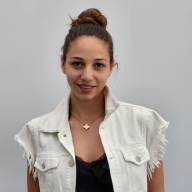What it does
POS+ is a modular OPV solar kit designed for use in aid projects. It can be installed by anyone without tools, even without technical knowledge. Unlike many solar systems, it includes a return and maintenance system to prevent it from becoming long-term waste.
Your inspiration
What happens to solar panels once they have reached end-of-life? Too complex for one semester, but too urgent to ignore. To understand the reality behind solar aid projects, I travelled to Cambodia to work with the NGO sunhelp. Seeing panels installed without maintenance plan and the amount of waste lying around, was a turning point. There I experienced the gap between good intentions and long-term impact. My biggest source of inspiration was my design trip; my greatest motivation: the local people. The relevant research question emerged right there. Design journeys are a first step to asking the right questions, to searching real problems.
How it works
POS+ is a lightweight rollable solar module based on organic photovoltaics (OPV). Compared to conventional silicon modules, OPV is more flexible, resource-efficient and easier to recycle. POS+ uses ASCA film cells (800 × 400 mm) and is installed at working height by a simple zip-and-go strap – no tools are necessary, no climbing. Even people without technical experience can set it up safely. The turquoise-violet color boosts light absorption, and the conductor layout ensures minimal resistance (fill factor: 74%). A waterproof housing allows maintenance and part replacement. POS+ powers basic lighting but is modularly expandable. It comes in biodegradable pulp packaging; the instructions are printed on a bamboo cloth with intuitive icons to overcome language barriers. A take-back and maintenance concept ensures the system stays functional and avoids solar waste in remote areas. POS+ brings energy where it is needed and takes responsibility for its impact.
Design process
The design process started with on the ground research in Cambodia, where I worked with the NGO sunhelp. I installed solar panels in remote villages, purchased locally available solar home systems, conducted interviews and workshops and documented how solar energy is used. Most families live in simple huts and only need basic supply for light and cell phone charging. I observed unsafe DIY installations with cable ties, rusty nails and makeshift pole constructions. These findings shaped the entire design process. Back in Germany, I focused on solar technology, sustainability challenges and alternative materials such as OPV, algae cells or biopanels. I sketched solar concepts for roof structures, mobile flags, free-standing units and disposable panels. Due to the enormous waste problem in Cambodia, packaging became a key topic. In material studies, soft-touch films, printed fabrics, screen-printed cell patterns and laser-cut surfaces were tested. The final prototype: a flexible OPV module (800 × 400 mm) with a “zip-and-go” strap for tool-free assembly at working height. It has a waterproof repairable housing, a flexible oval shape and a turquoise-purple color gradient for better light absorption and optimized conductor paths. Confident technical look but easy to use.
How it is different
POS+ breaks away from the rigid, glassy, technology-heavy image of conventional solar modules. It was developed for corrugated iron huts and environments where access to electricity is limited, resources are scarce and professional installation is not possible. Unlike conventional solar systems, POS+ uses organic photovoltaics (OPV) - lighter, is more flexible and on a promising path to recyclability. The soft, oval shape and intuitive “zip-and-go” strap make the system tool-free and accessible to even non-professionals. The design is the result of field research I conducted in Battambang using real-life use cases. POS+ includes biodegradable cellulose packaging and a repairable waterproof case. It's not just about access to energy, but also about rethinking solar design as something that is accessible, customizable and sustainable from installation to disposal. A maintenance and return concept ensures that the modules do not end up in nature.
Future plans
The technology behind POS+ already exists. The next step is to build a working prototype using ASCA’s OPV films and then to develop a market-ready prototype in collaboration with experts to be tested under real-world conditions, ideally on a return trip to Cambodia. Although OPV is currently rather expensive, its durability, repairability and recyclability make it a future-proof solution. My goal is to work as a designer in solar innovation and contribute to sustainable and accessible energy systems. POS+ is just the beginning of that journey.



Connect